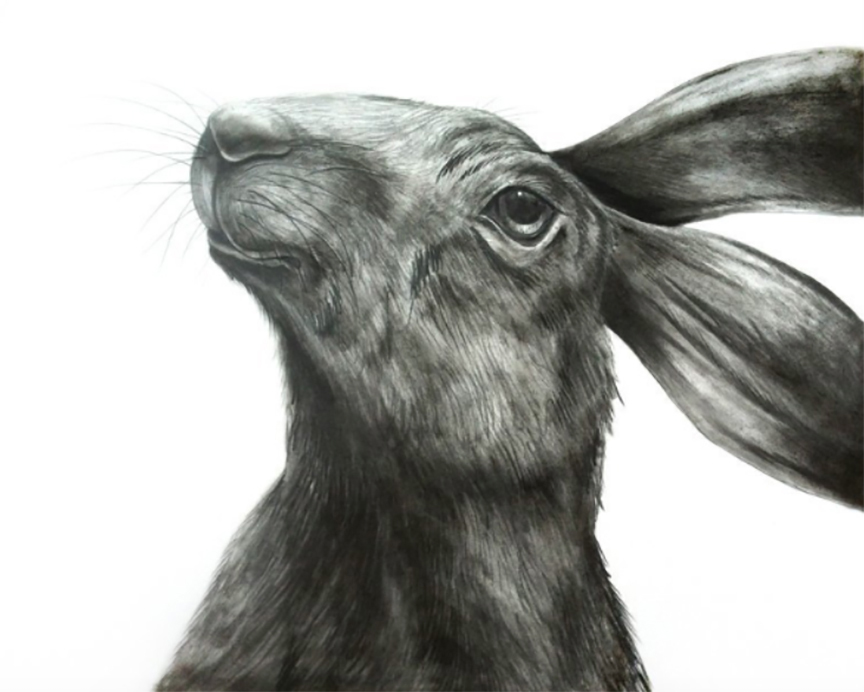Creating artwork with carbon dust is not a widely used technique, yet it is a wonderful medium for creating luminous and detailed drawings. Finished pieces have a lush appearance and the process is almost sculptural, as what is taken away is as important as what is laid down. Max Brödel, the father of modern medical illustration, pioneered this method of illustration in the late 19th century. The technique yields very sublet shifts from deep shadows to vivid highlights easily incorporating the full spectrum of the gray-scale. The carbon dust is brushed onto a surface with soft brushes and “carved” into with a gentle rubbing, erasing or scratching.
Artist Emma Skurnick has embraced the medium. “I have been having a lot of fun with carbon dust technique”, she says. “I enjoy the way the blacks and grays seem to absorb light like velvet, as well as the way they afford me the opportunity to create such subtle gradients and textures.”

Skurnick received her Bachelor of Fine Arts in sculpture and drawing from Binghamton University, NY. Although she began her artistic career as a sculptor, “A friend told me that there was a way of making a living doing art as a Scientific Illustrator I knew I had found my niche,” she says. “Science Illustrators are hired by magazines, researchers and museums to illustrate concepts pertaining to the natural world: how snails migrate up and down the stems of grass throughout the day, the way bones have evolved, how rats like to play.”
Skurnick received her certification in Science Illustration from UC Santa Cruz, CA, and one of the media she mastered there is carbon dust. “It affords the possibility for precise levels of control and detail,” says Skurnick. Although Skurnick became a science illustrator in 2000, she splits her time three ways: between science illustration, fine art, and teaching.
“My own art is always rooted in storytelling, but the stories that feel compelling to me change over time. In art school, my work was based on what it meant to be a human in a physical body: I was fascinated by the machinery of our being alive: rib cages, digestive systems, organs and bones. These pieces (both sculpture and drawing) were very physical – dense applications of charcoal, layers of wax, embedded teeth.
When I switched gears to focus on science illustration, it became my job to tell other peoples’ stories—to make the work of scientists interesting and explicable to the general public. Part of this work is to hide the presence of my own artistic hand as much as possible. Scientists don’t like visible brushstrokes or “arty” marks, because they might accidentally be interpreted as a physical structure on the specimen being depicted causing the viewer to wonder, “is that a brushstroke, or an extra bone?”
Emma Skurnick’s fine art incorporates some of what she was trained to do for scientific illustration, and her use of carbon dust gives unique depth to her luminous drawings.

“I enjoy the clarity that illustration training has given to my own personal stories. Not much is hidden in shadows or ambiguous mark making – the elements on the page are all clearly visible. The stories that these realistically rendered forms are telling, however, are left open to the viewer.”
Carbon dust can be purchased at Jerry’s Artarama. http://www.jerrysartarama.com/generals-sketching-powders?gclid=CLGv6b-DpNICFdgVgQodv0oMnQ
Ora Sorensen (orasorensen.com) was born in New York but grew up overseas in such countries as Libya, Turkey, Iran, Holland and Thailand. Her paintings are collected worldwide and have been shown in numerous exhibitions.




